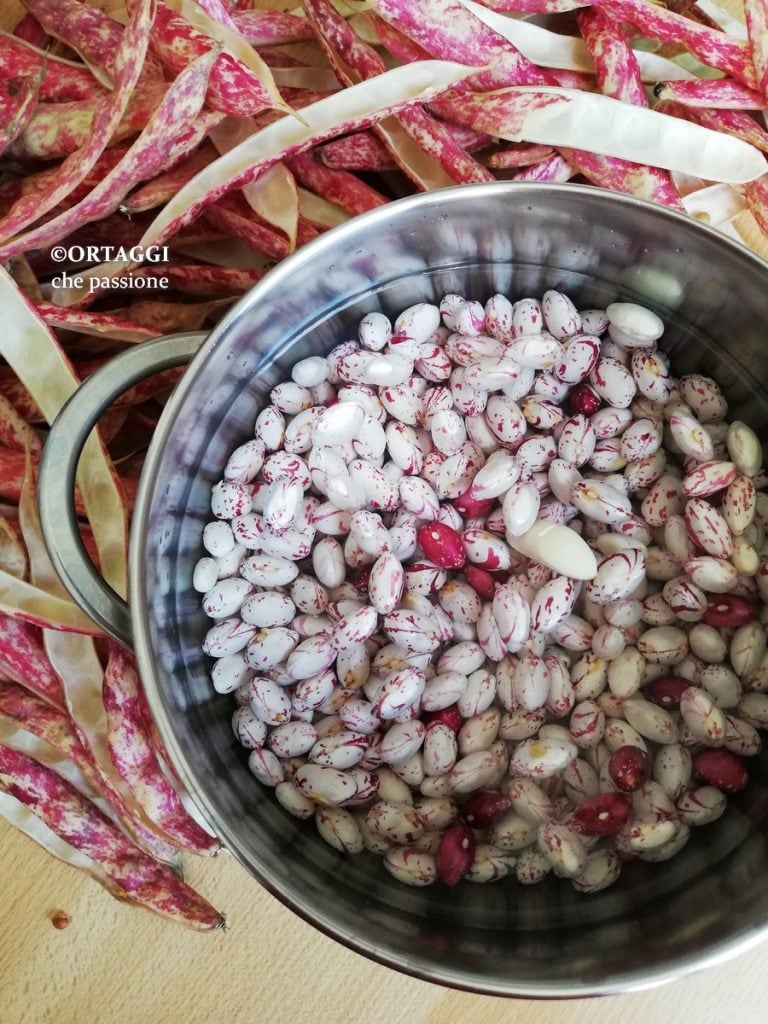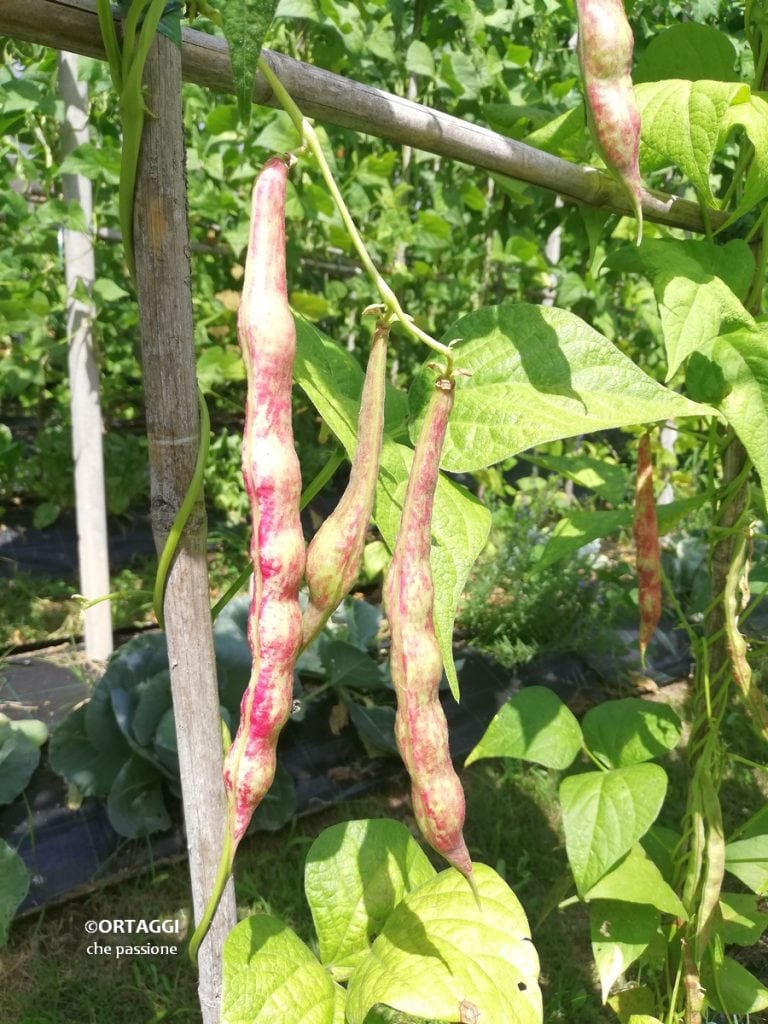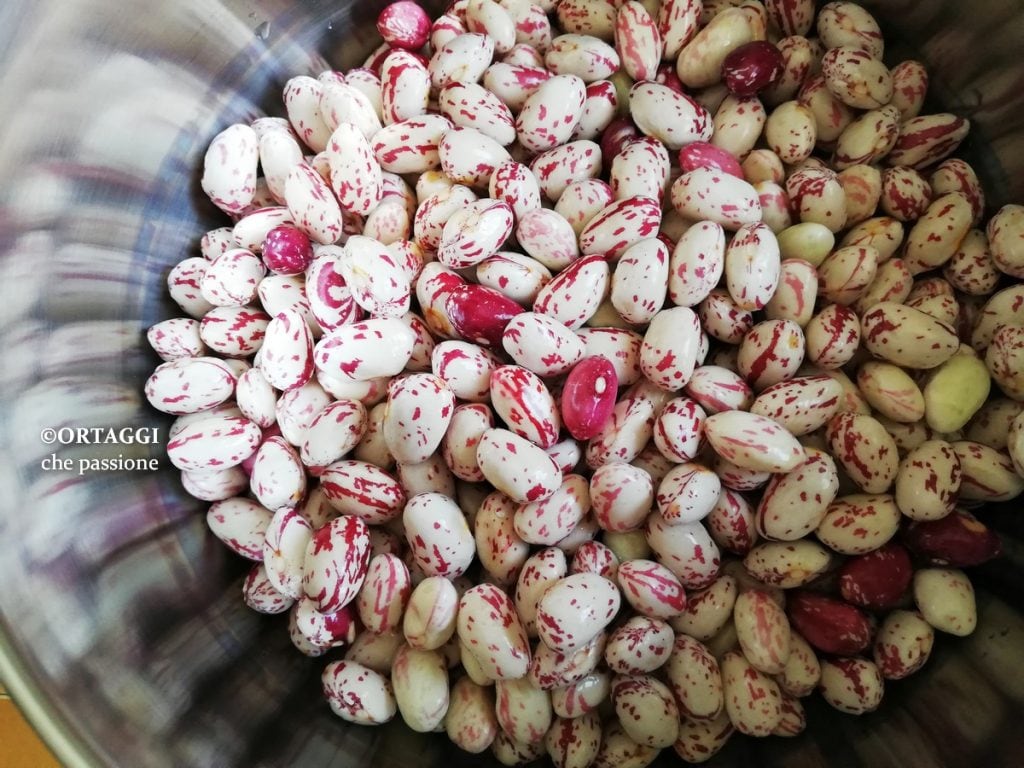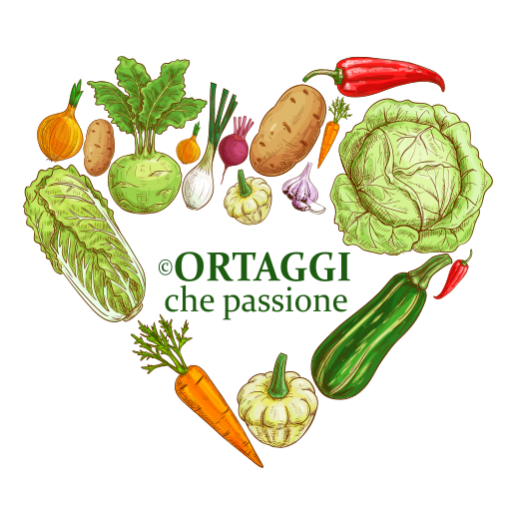Fresh beans have a richer taste and texture compared to dried ones.
How to cook fresh borlotti beans? Follow my tips for perfect and quick cooking.
Fresh beans do not require soaking and the cooking time is shorter.
HERE how to preserve fresh beans.
HERE the cooking of dried beans.
Discover more details about these legumes in the article from the National Beans Day on the Italian Food Calendar AIFB.
HARVEST SEASON for #freshbeans – from June to October
Great in summer recipes.
RECIPES with fresh borlotti beans

- Difficulty: Easy
- Cost: Cheap
- Preparation time: 20 Minutes
- Portions: 4 People
- Cooking methods: Stove
- Cuisine: Healthy
- Seasonality: Summer, Autumn
- Energy 136.18 (Kcal)
- Carbohydrates 22.88 (g) of which sugars 0.23 (g)
- Proteins 8.40 (g)
- Fat 0.64 (g) of which saturated 0.09 (g)of which unsaturated 0.00 (g)
- Fibers 9.77 (g)
- Sodium 393.13 (mg)
Indicative values for a portion of 100 g processed in an automated way starting from the nutritional information available on the CREA* and FoodData Central** databases. It is not food and / or nutritional advice.
* CREATES Food and Nutrition Research Center: https://www.crea.gov.it/alimenti-e-nutrizione https://www.alimentinutrizione.it ** U.S. Department of Agriculture, Agricultural Research Service. FoodData Central, 2019. https://fdc.nal.usda.gov
Ingredients for cooking FRESH BEANS
PORTION for one person: 100 – 120 grams of shelled beans (200 – 250 g in the pod).
Fresh beans in the pod have a lot of waste, about 50% of the initial weight. Other fresh legumes (broad beans, peas) have even more waste.
- 2.2 lbs fresh borlotti beans (in their pod)
- 1 clove garlic
- to taste kombu seaweed (or aroma of choice: bay leaf, anise, cumin, oregano, rosemary, sage, savory, celery, fennel seeds, ginger)
- 3 cups water (cold)
- to taste salt (and pepper)
- to taste extra virgin olive oil
- rosemary (fresh or dried)
- Half white onion (or fresh Tropea)
- garlic (minced)
Tools
- Frying Pan stainless steel
- Pressure Cooker 7 liters
Cooking FRESH BEANS
Fresh legumes (beans, broad beans, peas) DO NOT require soaking.
Shell the fresh beans from their pods just before cooking them because in the air their skin dries quickly and cooking becomes uneven.
How to shell them quickly? Press between the index finger and thumb the side seams at the tip of the pod, which will separate, then open it along its entire length by spreading the two halves apart. Extract the beans.
Remove moldy, discolored, green, rotten, soft, or dried borlotti.
Quickly wash them under running water.

BOIL
Boil in plenty of cold, unsalted water. Once it reaches a boil, continue cooking over low heat for 30-50 minutes. When they are ready, turn off the heat and leave them in the cooking water until serving: this way the skin remains soft.
STEW
Place the shelled borlotti in a heavy-bottomed saucepan (ideally use an enamel-coated earthenware pot with a flame diffuser to ensure a constant temperature). Cover them with cold water, add a peeled garlic clove and the preferred aroma. Do not salt and do not interrupt cooking to avoid the skin hardening or breaking.
Gently bring to a boil, lower the heat, and continue cooking over a low flame, with the pot partially covered. If necessary, add hot water.
At the beginning of cooking, remove the white bubbles that form on the surface with a skimmer. To avoid breaking the beans, do not use ladles: gently shake or rotate the pot.
Bring to full cooking and let all the water dry out.
Cooking in PRESSURE COOKER
Pour the borlotti beans into the pressure cooker and cover with water about an inch above. Add preferred aromas, without salting. Cook over high flame until the classic whistle, then lower the flame and continue cooking for another 10 minutes. Turn off the heat and decide whether to manually release pressure or leave the beans inside until the lock device has completely lowered.
Note that rapid cooking in a pressure cooker tends to break the beans.IN SAUCE
Once cooked, heat in a pan with tomato flavored with a sauté.
STORING cooked beans
Storing cooked beans in their cooking water is the best way to keep them soft and flavorful. Keeping them immersed in the liquid prevents them from drying out or hardening. Store them in the refrigerator in an airtight container and heat them directly in the same water to preserve taste and texture.
Better to drain them just before serving, then season and bring them to the table.
HOW TO SERVE THEM?
🍀 Warm with extra virgin olive oil, salt, and a mince of rosemary, parsley, basil, and/or garlic.
🍀 Cold in a salad with raw onion
🍀 Combined with organic whole grains
Curiosities
The pods are also edible. They can be added to soups, removing their strings and damaged parts. It’s better to use organic ones.
What is the season for fresh beans?
Fresh borlotti beans are typically available in summer until early autumn, from June to October. Keep in mind that the season for fresh borlotti beans can vary slightly depending on the geographical area and local climatic conditions. To cook high-quality fresh borlotti beans, look for local and seasonal products at farmers’ markets or fresh produce stores in your area.
What is the difference between dried and fresh legumes?
The main difference between dried and fresh legumes lies in their texture and moisture.
Dried legumes: are legumes such as beans, lentils or chickpeas that have been dried to almost completely remove moisture. They can be stored for many months or even years in a cool, dry place. They are hard and require prior soaking and long cooking to make them edible. They are suitable for many preparations such as soups, stews, and vegetable main courses.
Fresh legumes: are freshly picked legumes from the plant, which retain a high moisture content. They must be consumed relatively soon, typically within a week from the time of harvest, as they contain a high percentage of moisture and spoil quickly. They are soft, sweet, and can be cooked in much shorter times than dried ones. They are ideal consumed as a side dish or added to salads and have a more delicate and fresh flavor.

